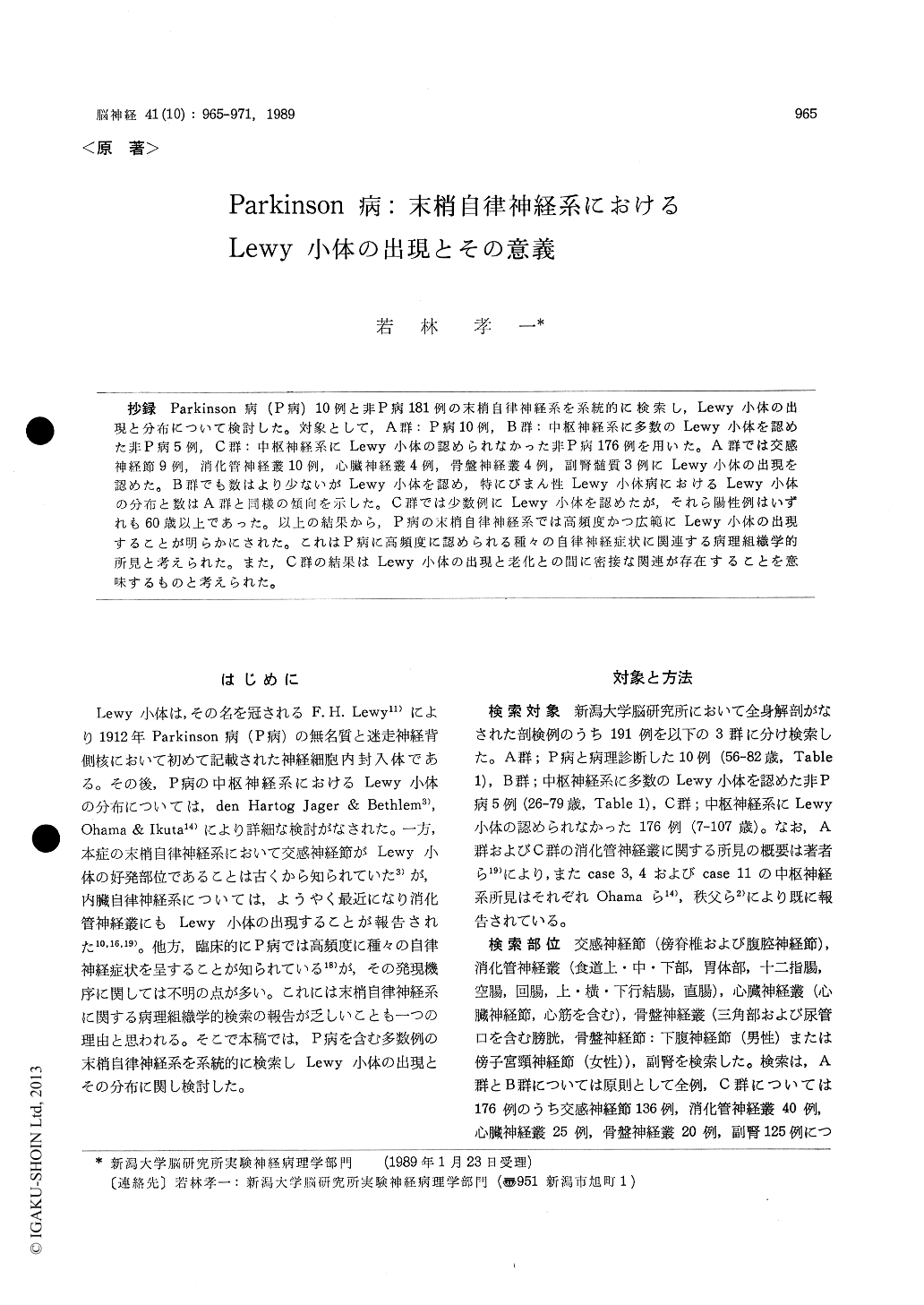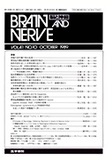Japanese
English
- 有料閲覧
- Abstract 文献概要
- 1ページ目 Look Inside
抄録 Parkinson病(P病)10例と非P病181例の末梢自律神経系を系統的に検索し,Lewy小体の出現と分布について検討した。対象として,A群:P病10例,B群:中枢神経系に多数のLewy小体を認めた非P病5例,C群:中枢神経系にLewy小体の認められなかった非P病176例を用いた。A群では交感神経節9例,消化管神経叢10例,心臓神経叢4例,骨盤神経叢4例,副腎髄質3例にLewy小体の出現を認めた。B群でも数はより少ないがLewy小体を認め,特にびまん性Lewy小体病におけるLewy小体の分布と数はA群と同様の傾向を示した。C群では少数例にLewy小体を認めたが,それら陽性例はいずれも60歳以上であった。以上の結果から,P病の末梢自律神経系では高頻度かつ広範にLewy小体の出現することが明らかにされた。これはP病に高頻度に認められる種々の自律神経症状に関連する病理組織学的所見と考えられた。また,C群の結果はLewy小体の出現と老化との間に密接な関連が存在することを意味するものと考えられた。
The distribution of Lewy bodies (LBs) in the peripheral autonomic nervous sytem was examined in the following 3 groups : group A, 10 patients with Parkinson's disease (age range, 56-82 years) ; group B, 5 nonparkinsonian patients with manyLBs in the central nervous system (CNS) (range, 26-79 years) ; group C, 176 nonparkinsonian pa-tients without LBs in the CNS (range, 7-107 years).
In group A, LBs were found in the para-vertebral and/or celiac sympathetic ganglia in 9 cases, enteric nervous system in all cases, cardiac and pelvic plexuses in 4 cases each, and adrenal medullae in 3 cases. They were almost exclusively intraneuritic. LBs were also found in group B: sympathetic ganglia in 4 cases, enteric nervous system in 5 cases, and pelvic plexus and adrenal medullae in one case each. Interestingly, both the distribution and the number of LBs in a patient with diffuse Lewy body disease were similar to those in group A. LBs, although definitely fewer in number, were also found in group C: sympathetic ganglia in 5 out of 136 cases ; enteric nervous sys-tem in 8 out of 40 cases ; and cardiac plexus in 2 out of 25 cases. All of these positive cases were over age 60.
The wide occurrence of LBs in the peripheral autonomic nervous system in patients with Parkin-son's disease may play an important role in causing a variety of autonomic symptoms in the disease. On the other hand, LBs have been occasionally found in nonparkinsonian patients over age 60. It has been well known that in the CNS LBs can be found in approximately 10% of aged nonparkin-sonian patients. The significance of the results of present study appears to be analogous to that for LBs in the CNS, suggesting that there exists a close relationship between the disease process of Parkinson's disease and aging.

Copyright © 1989, Igaku-Shoin Ltd. All rights reserved.


